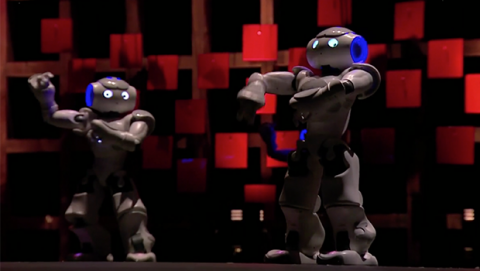Robots captivate us. They’ve long inspired summer blockbusters and science fiction page turners. And in the world of robotics, as the gap between sci-fi and reality begins to close, we are all the more fascinated by what robots can do for us – in our personal lives, in our businesses, and in the world.
[ Read also: How to explain Robotic Process Automation (RPA) in plain English. ]
Whether the idea of robotics excites or scares you, there is a wealth of knowledge out there on what robots can teach us about being human and how our interactions with machines will evolve in the not-so-distant future. Consider the thought-provoking TED Talks below:
Why we have an emotional connection to robots
Speaker: Kate Darling
If you’ve ever seen one of those viral videos of robotics operators intentionally knocking over or kicking a robot to test its agility, you probably felt bad for the robot. That’s because we’re biologically hardwired to project intent and life onto robots, according to Kate Darling. We name our robots; we feel bad when our Roombas get stuck under the couch, she points out. In this talk, Darling explores how our emotional connections to robots might start to have consequences in a world where robots are increasingly integrated into our lives.
The artificial muscles that will power robots of the future
Speaker: Christoph Keplinger
This video starts with a video of a clunky metal robot attempting to get out of a car. It’s painfully slow – and then the speaker Christoph Keplinger informs us that the video is actually sped up. We’ve made excellent progress on the brains of robots, but their bodies are still primitive, says Keplinger. In this talk, he discusses the huge potential of soft robotics. He provides a demo of what the future of artificial muscles could look like as well as their practical applications – from improving the quality of life for those with prosthetic body parts to enhancing and restoring mobility for the aging population.
To see more examples of soft robotics, see Giada Gerboni’s TED Talk: The incredible potential of flexible, soft robots.
Why we need to build robots we can trust
Speaker: Ayanna Howard
When it comes to artificial intelligence and machine learning, we know systems are biased. We’ve seen countless examples of unintended sexism and racism in AI. But we still use these systems, points out Ayanna Howard in this talk. Why? Because they improve and enhance our lives. In some cases – like when robots are used to improve leaning for children with special needs – you’d be hard pressed to find someone who could question the benefit of robots on our lives. But we also need them to be better – and everyone has a voice on this issue, says Howard.
Can we build AI without losing control over it?
Speaker: Sam Harris
Super-intelligent AI and robotics are on the horizon – and that’s something we should fear appropriately, argues Sam Harris. The idea of death by robots is a “fun” concept and the inspiration for countless sci-fi movies and books – but we need to change our emotional response to this idea, he argues. Because although it might not look like it does in the movies in which machines spontaneously turn on us, it is likely that future AI and robots will be so vastly more intelligent than we are – in ways we can’t even begin to understand – that they will treat humans no better than we treat ants, he says. Grab your security blanket, and watch this talk for a compelling call to arms to everyone to ensure we are building a future we can accept.
What’s it like to be a robot
Speaker: Leila Takayama
When one company decided to build a robot to make video conferencing a better experience for remote employees, something interesting happened. They started to learn more about what the future of human-robot interactions might look like – and how those interactions could re-shape our experiences with other humans, as well. In her talk, Leila Takayama shares some of the unique challenges and experiences that we all may begin to experience as we start to interact with more robots and robotic things in our daily lives.
Bonus bots
Finally, if you came to this article just to enjoy watching robots do amazing things, we won’t disappoint. Behold: a robot that flies like a bird, a robot that eats pollution, a robot that moves like a salamander, and, just for fun, a robot dance routine.
[ What's coming next in AI? Read AI in 2019: 8 trends to watch. ]






